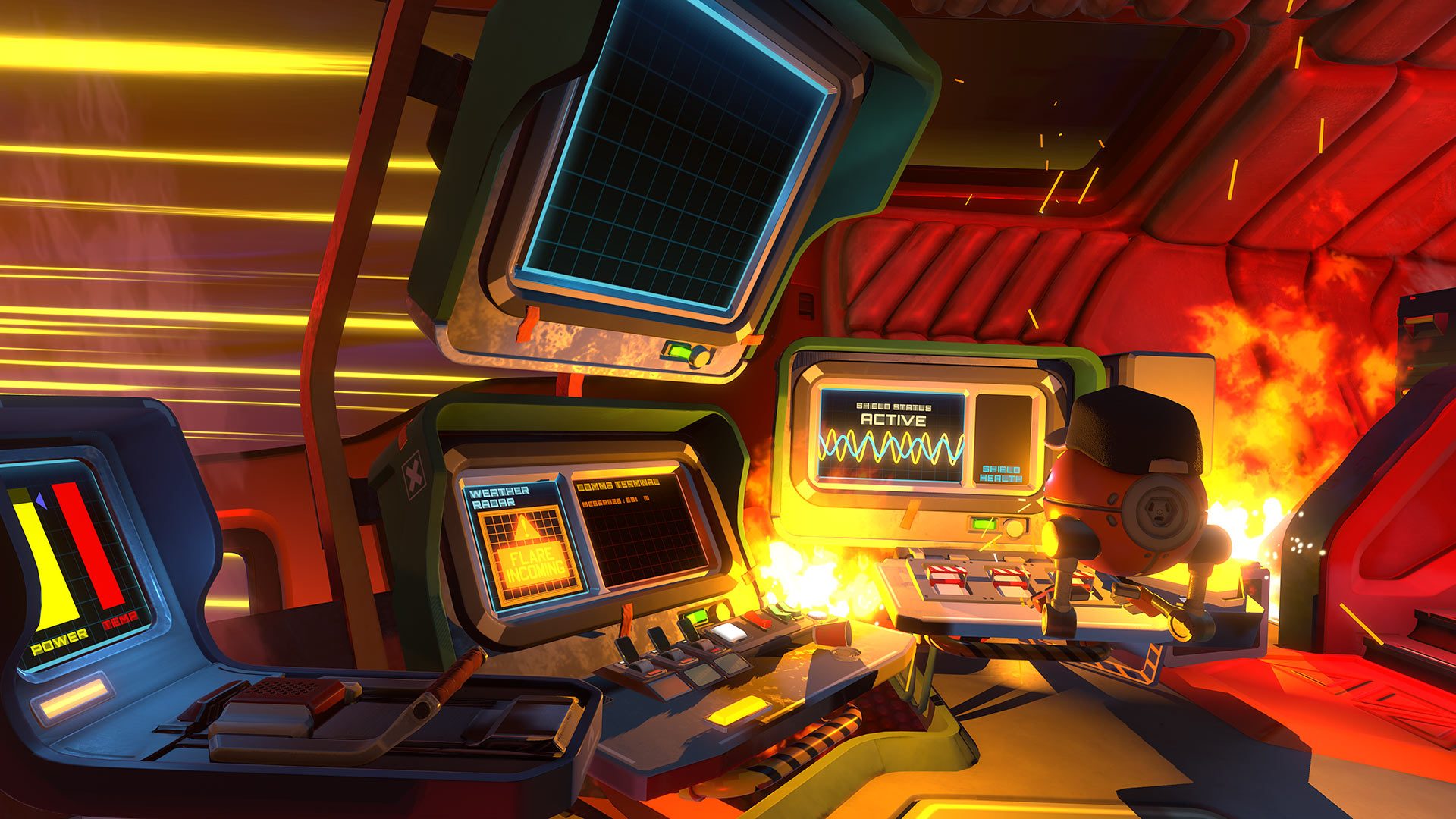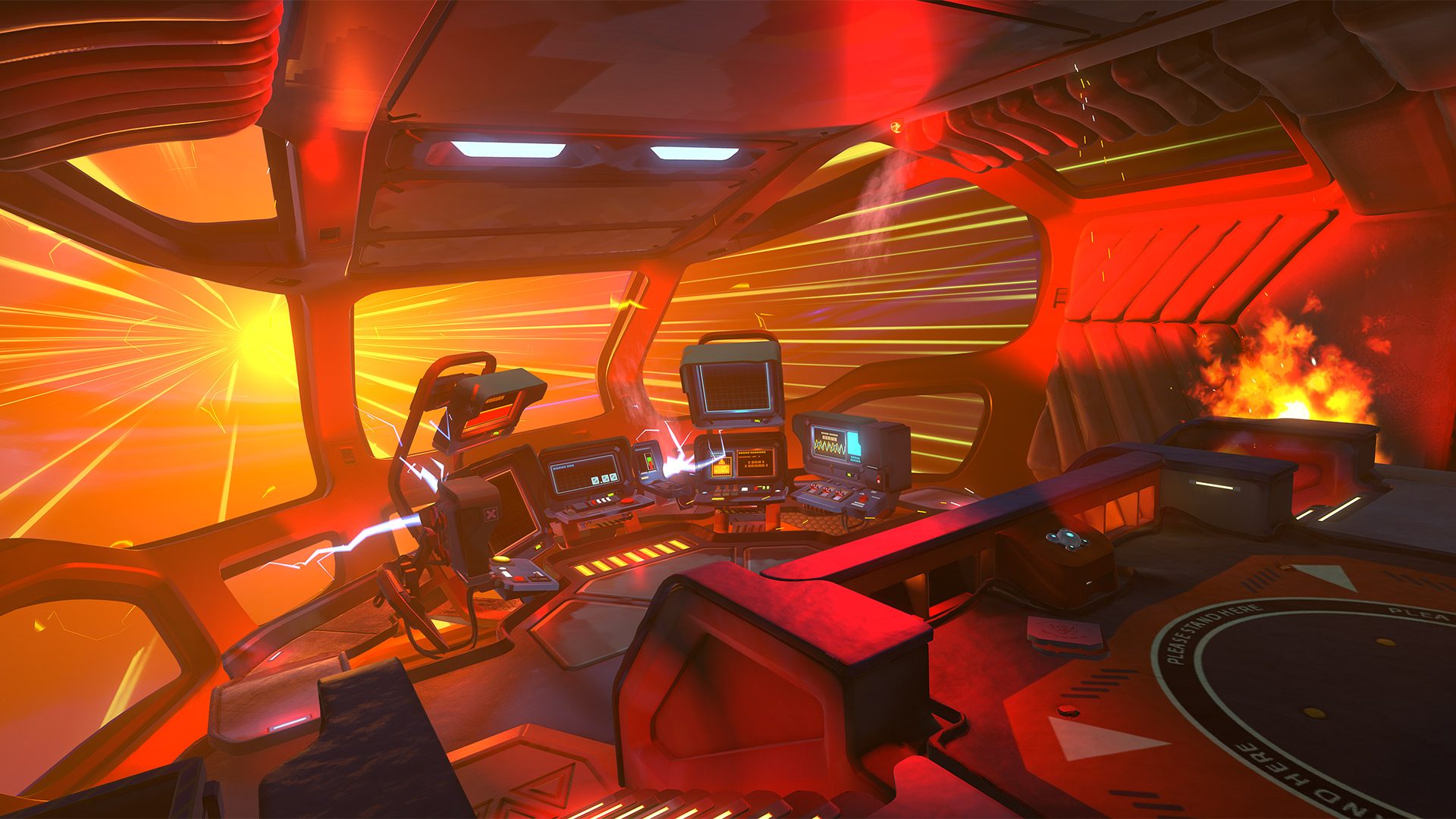Hipfire Games, a Helsinki-based studio made up of ex-Supercell and Rovio developers, announced late last year that their space-based delivery game Failspace was in the making for HTC Vive, Oculus Rift, and Windows VR headsets. Now the studio is accepting registration for the game’s closed alpha, which is due to start on December 3rd.
The cross-platform co-op game is set aboard a sleep-looking, but ultimately breakage-prone cargo vessel—a far cry from Star Trek: Bridge Crew’s pristine Federation ship.
The game promises to let you travel to deep space destinations, all the while threatened with the task of cooperatively repairing the ship as you hit the inevitable ion storm or solar flare that can wreak havoc on the ship’s systems.

The game is said to take place in the Small Dog galaxy, made up of just a few dozen stars. Each solar system is owned by one of four political factions which produce different kinds of goods and have different material needs, so you’ll need to travel along the well-marked trade routes; it isn’t an open-world space sim, but rather more focused on quickly resolving the issues that arise with quick cooperation and communication with your team. Hipfire says playsessions tend to take around 10 minutes.

When you’re not repairing the ship, your cargo will also require constant hands-on maintenance and care, be it expensive and fragile art that has to be transported gingerly, containers filled with rare animals that need oxygen, or donuts for a police force.
Registration to join the alpha is now open via the Hipfire website. Supported headsets include Vive, Rift, and Windows VR headsets, although the studio says more are coming soon.

“The alpha will focus on making sure the VR aspect of the game will provide a high quality VR multiplayer experience,” Hipfire says in a press statement. “The BIG plan for the future is to enable players with different types of devices to join game sessions of players using high-end VR devices. Hipfire are building the technology that […] will enable online cross-platform between VR and mobile, allowing people with mobile phones to play with their friends online from anywhere in the world, and turning VR from a solitary activity into a social one.”
Failspace is slated to launch in Q2 of 2019 on PC VR headsets, and subsequently add support for desktop users in Q3, then mobile VR headsets sometime in Q4 of 2019.






